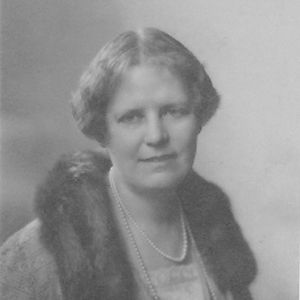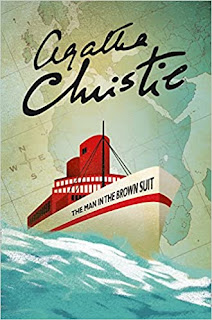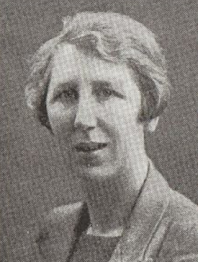A novel where Miss Silver plays an important role in the background
 |
| The Case is Closed is the second of the Miss Silver novels |
But although the character of Miss Silver does appear in The Case is Closed, published in 1937, most of the story is told from the viewpoint of the book’s heroine, a young woman called Hilary Carew.
Hilary’s cousin, Marion Grey, is very unhappy because her husband, Geoff, has been convicted of murder and is in prison, having served one year of the long sentence he was given.
Hilary has always believed in Geoff’s innocence, but a chance encounter on a train with one of the witnesses at his trial prompts her to start reinvestigating the closed case herself.
With no thought for her own safety, Hilary tries to track down the witness she spoke to, but after someone tries to kill her, she turns to her ex-fiancé, Henry, for help. He eventually calls in Miss Silver to investigate the case properly.
Patricia Wentworth died 61 years ago today in Camberley in Surrey. Her last Miss Silver novel, The Girl in the Cellar, was published the same year, which brought the total of Miss Silver books to 32.
Although Miss Silver does not play a major part in The Case is Closed, she is in at the denouement, having been following two of the suspects, and she is able to alert Henry to the fact that Hilary is once again in danger.
Fans who wanted to see more of Miss Silver may have been disappointed that most of her work takes place in the background, but the main investigators in this story, Hilary and Henry, are both interesting and engaging characters themselves.
 |
| Patricia Wentworth, who waited nine years to produce her second Miss Silver novel |
Patricia Wentworth was the pen name for Dora Amy Elles, who was born in 1877 in India, which was at that time under British rule. In addition to her Miss Silver novels, Patricia wrote 34 other novels and some poetry. She was a contemporary of Agatha Christie and Dorothy L Sayers and it is surprising that she is not as well-known as them.
Her first Miss Silver Mystery, Grey Mask, published in 1928, introduces an unassuming little old lady, who is continually knitting baby garments, but is actually a shrewd private detective with a brilliant mind.
Many people have assumed over the years that Miss Silver was inspired by Agatha Christie’s much-loved Miss Marple, but it could have been the other way round. The first Miss Marple novel, The Murder at the Vicarage, was not published until 1930, although the endearing old lady had made her first appearance in a short story published in The Royal Magazine in December 1927.
Whoever came first, the two old ladies might at first appear to be similar characters, but there are many differences between them. Miss Marple lives in a cottage in a sleepy village but is more worldly wise than she might appear. She has developed a deep knowledge of human nature and can always refer to a useful village parallel when investigating a case. Miss Silver, however, is the real deal, as she walks the mean streets of London and takes on cases in a professional way, pitting her wits against major crime bosses.
In the first two Miss Silver novels, there is little explanation about who she is, or why she has set herself up as a private investigator in London in the 1920s and is well known in upper-class circles.
However, Miss Silver develops as a character during the 32 books and goes on to work closely with Scotland Yard. The reader will eventually discover she is a retired governess with a passion for Tennyson as well as for knitting.
Patricia Wentworth's Miss Silver novels are available from or









